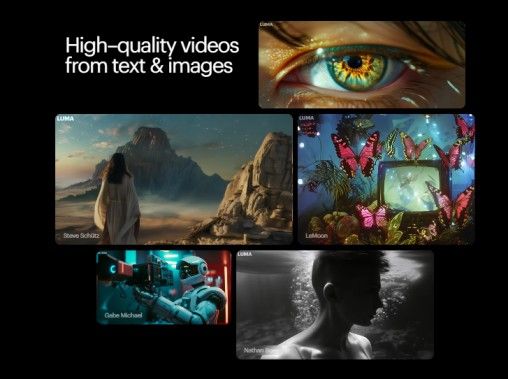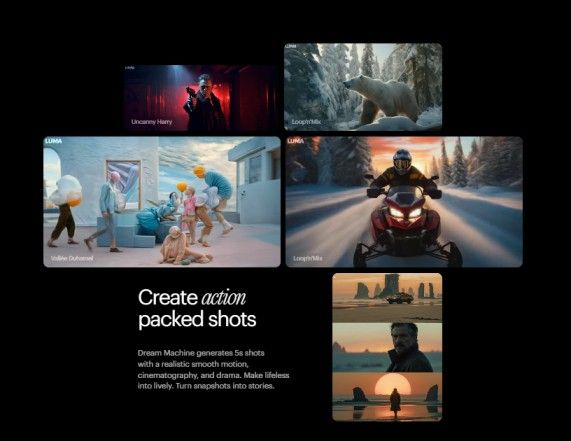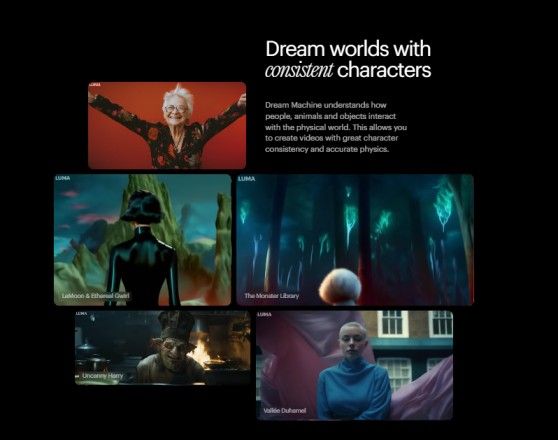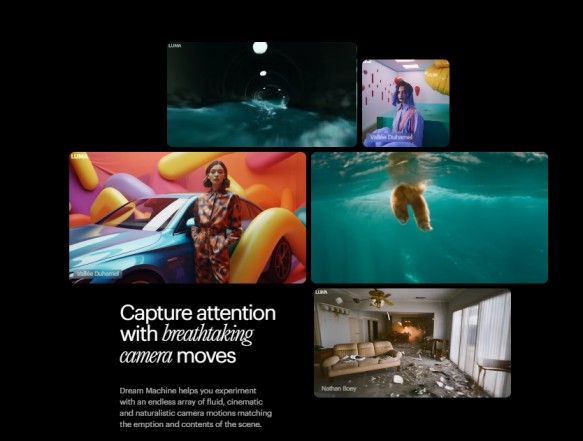In this article we will delve into the Luma AI Dream Machine, a cutting-edge tool that transforms text prompts and images into high-quality video content. As artificial intelligence evolves, technologies like the Luma Dream Machine are making video creation more accessible and efficient.
What is Luma AI Dream Machine ?
From the words of its creators, Luma Dream Machine is an AI-powered tool that swiftly produces high-quality, realistic videos from text and image inputs. This advanced transformer model, trained directly on video data, boasts high scalability and efficiency. Its strength lies in generating physically accurate, consistent, and dynamic scenes.
A key feature setting Luma Dream Machine apart is its status as the first freely accessible video generation AI available to the public. Users can create 5-second, high-quality video clips using either text prompts or by animating still images. While the resulting videos are visually striking, they're not without limitations. Minor inaccuracies and morphing issues may occur, despite the overall impressive quality.
Luma AI has introduced a revolutionary text-to-video AI tool that enables users to generate high-quality, realistic video clips from simple text prompts. This cutting-edge technology opens up new possibilities for rapid and accessible video content creation, making it a game-changer for both amateur creators and professional content producers.
Key Features of Luma Dream Machine
- AI-powered video generation from text prompts and images
- Creates 5-second high-quality video clips
- Produces physically accurate and consistent scenes
- Highly scalable and efficient transformer model
- Trained directly on video data
- Freely and publicly available
- Capable of animating still images

Key Features of Luma AI’s Text-to-Video Tool
One of the standout features of Luma AI’s tool is its ability to generate diverse, high-quality videos that exhibit realistic motion, cinematography, and dramatic elements. The AI model has an advanced understanding of how people, animals, and objects interact within the physical world, allowing it to replicate accurate physics and maintain consistent character portrayal. Users can experiment with a variety of fluid, cinematic camera motions that align with the emotional tone and content of the scene.
The text-to-video tool is exceptionally fast, capable of generating 120 frames in just 120 seconds. This rapid processing time allows users to quickly iterate on their ideas and explore more creative possibilities.

User Experience Insights
While Luma AI’s tool has garnered praise for its impressive capabilities, users have noted some limitations. The videos produced are visually compelling, but there can be minor inaccuracies and morphing issues, especially with complex prompts.
Due to the high demand for this tool, Luma AI has implemented a queuing system, with some users waiting overnight for their prompts to be processed.
However, once at the top of the queue, video generation only takes around two minutes. Users can also enhance their prompts using Luma’s language model to provide more detailed and descriptive explanations.

Luma AI: A Company Overview
Founded in 2021 and based in San Francisco, Luma AI is a startup that has developed state-of-the-art artificial intelligence technology for generating realistic 3D content and videos from text prompts or images. The company has raised over $70 million in venture capital funding and was founded by a team of seasoned entrepreneurs and AI researchers, including CEO Amit Jain, a former computer vision expert at Apple. The team at Luma AI includes experts in computer vision, graphics, and machine learning, all working towards the goal of democratizing 3D content creation through AI.
Luma AI's technology enables users to create high-quality 3D models of objects, scenes, and environments simply by providing a text description or prompt. Their AI-powered tools, such as the Genie text-to-3D model, can create any object in under 10 seconds, showcasing the speed and efficiency of their solutions.

Competitive Landscape
Luma AI’s text-to-video tool is entering a competitive market, with other notable players such as OpenAI's upcoming Sora also aiming to dominate the AI video generation space. Despite this competition, Luma AI has a strategic advantage by being first to market, capturing the attention and loyalty of early adopters. This early lead could prove crucial as the first app to win over initial users often gains a significant edge over competitors.
While Luma AI’s tool has been lauded for its capabilities, it still faces competition from other models like Kling and Haiper. Some reviewers have found these models to be more advanced in terms of prompt following and motion understanding. However, Luma AI’s focus on rapid, high-quality content generation keeps it at the forefront of innovation in this space.
.png?updatedAt=1718710425706)
Conclusion
Luma AI’s text-to-video tool represents a significant advancement in AI-driven video creation, offering unprecedented speed and quality. Despite some limitations and competition, it holds a promising position in the market. As AI technology continues to evolve, tools like Luma AI’s are poised to transform how we create and interact with digital content.
Also check out our website for expert insights, news, and exclusive updates about more future technologies and stay updated on more AI tools!





